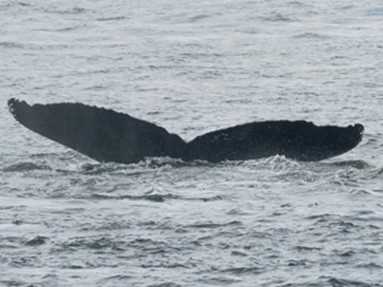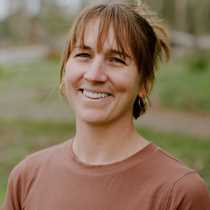It is not every morning that breakfast concludes with close wildlife encounters, let alone an encounter with a group of feeding humpback whales. While we were traveling through Peril Strait and enjoying our eggs and bacon, these giants of the sea were enjoying tons—literally tons—of schooling fish. These North Pacific humpback whales come to Southeast Alaska to partake in a summer feeding frenzy. The cold and nutrient-rich waters along with extra summer sunshine create a thriving coastal ecosystem that supports the large size and migrations of these massive creatures.
While most of our humpback encounters are with solitary whales that dive down to feed underwater, we witnessed a unique surface-feeding behavior called bubble-net feeding. Essentially, we observed a group of six to seven whales collectively create a bait ball of schooling herring and then all at once lunge to the water’s surface, catching the fish inside their open mouths. We see the same individual whales gathering year after year to bubble-net feed. Today, using fluke identification, we identified five of seven whales, including a known female named Angstrom.
After saying goodbye to the bubble-netters, we were on our way to Sitkoh Bay. We spent the afternoon getting to know the lush temperate coastal rainforest by walking along the shaded trails surrounding the bay. Salmon have begun to enter the area, and as we returned to the ship by Zodiac, we spotted a mother brown bear foraging with her two cubs nearby. It was an incredible first day exploring the marine and terrestrial ecosystems that make Southeast Alaska so grand. Yet in the end, it was the banana slugs that were the talk of cocktail hour. A reminder that the natural world, no matter how small, could still spark our excitement and wonder.







